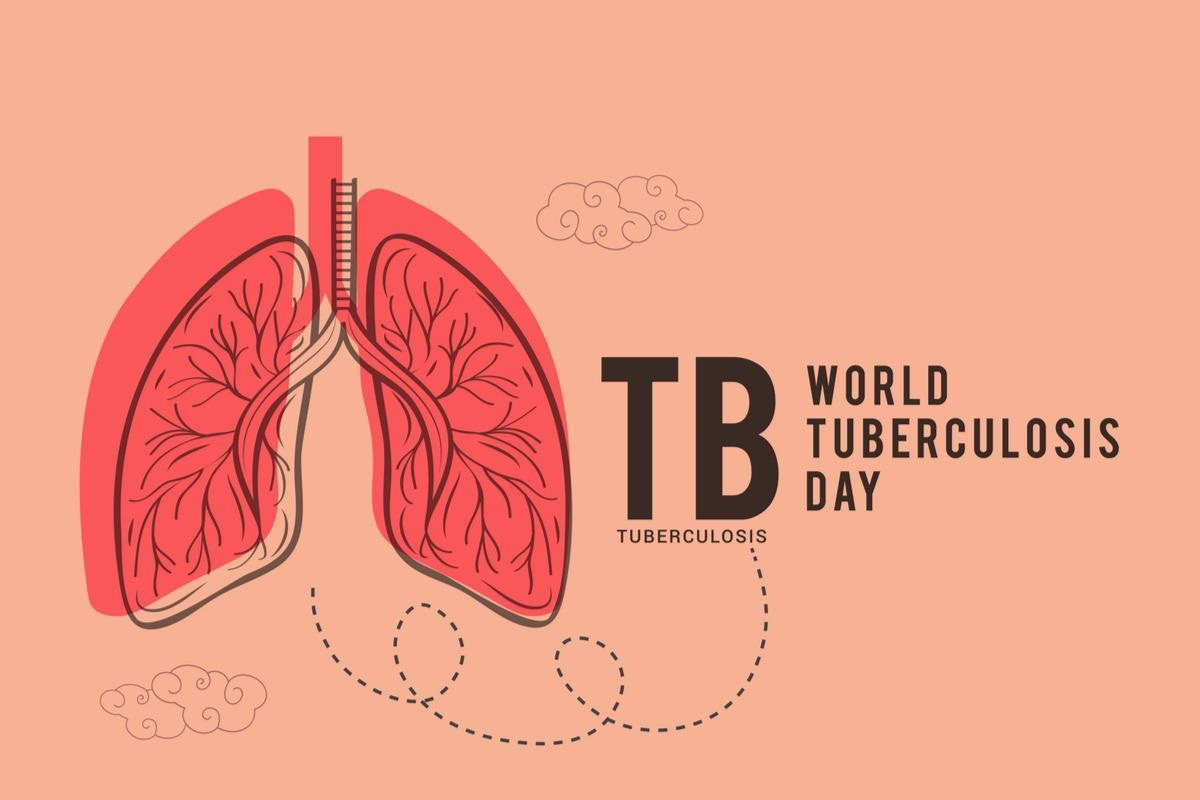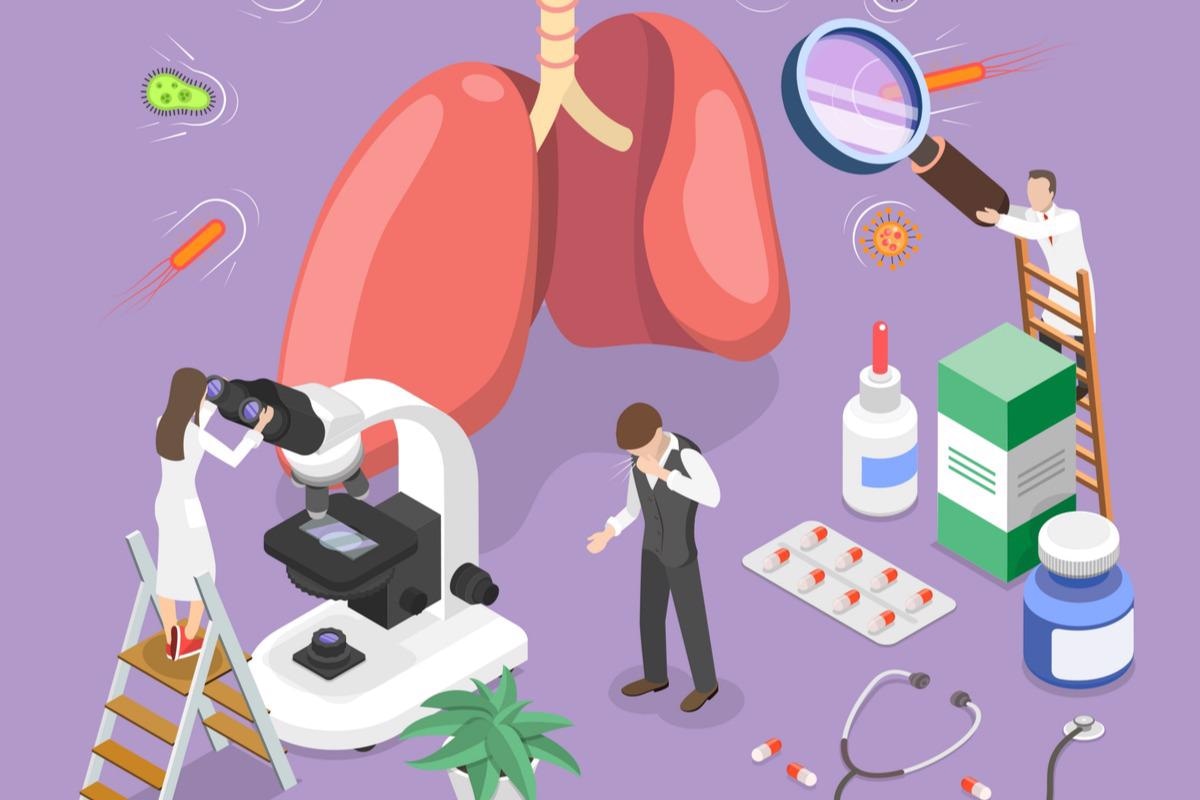 Interview conducted by Danielle Ellis, B.Sc.Mar 24 2022
Interview conducted by Danielle Ellis, B.Sc.Mar 24 2022
March 24th is World Tuberculosis Day. News Medical spoke to Dr. Maxine Caws about her expertise in this field and how best to invest to end TB, and ultimately save lifes.
Please can you introduce yourself and tell us about your expertise in tuberculosis (TB)?
I am Dr. Maxine Caws. I have worked on tuberculosis for over twenty years and authored over 100 scientific journal articles and book chapters. After my Ph.D., I moved to the Oxford University Clinical Research Unit in Ho Chi Minh City, Vietnam. I began working in a large tuberculosis referral hospital in the city and at the Hospital for Infectious Diseases. I was based in Vietnam for ten years, leading the TB research group at the Oxford University Clinical Research Unit, developing a multidisciplinary research team, and mentoring young Vietnamese scientists, researchers, and doctors who wanted to study tuberculosis. For the last five years, I have been based in Kathmandu, Nepal, with the Birat Nepal Medical Trust (BNMT). I am the principal investigator for a large research program on tuberculosis and other infectious diseases, including COVID-19.
Tuberculosis is a complex problem to solve, and my career has spanned many of the intertwining aspects of the challenge, from developing new drug treatments and diagnostic tests in the laboratory to testing them in real-world clinical trials, investigating the immune system variations that increase people’s vulnerability to TB disease, drug resistance and the evolution of the bacteria which causes TB, and assessing the financial impact of having TB on vulnerable families so that we can design effective strategies to reduce these costs, and talking to policymakers and politicians to advocate for improved TB services and prioritize resource allocation for TB in national and international health system agendas.
What inspired your career and subsequent research into TB?
While I was studying for my biochemistry undergraduate degree at the University of St Andrews, late one night, I searched in the university library for a topic to complete an essay assignment on ‘the use of viruses for humanity,’ which was due the next day. I came across a book that night about the smallpox eradication campaign.
I was enthralled by the story of how humanity united together to achieve a seemingly impossible goal and eradicate this devastating infectious disease, which is now history.
My essay was, of course, submitted late, but my career direction was set- I was inspired to pursue a career in infectious disease research and eradication that night.
How have you seen the diagnosis, treatment, and management of TB change over your career?
Sadly, far too little progress has been made in tuberculosis diagnosis, treatment, and management due to a lack of investments over the last 20 years.
When I started my Ph.D. studying tuberculosis, many people said, “why are you studying that? It’s history”.It should be history, but over 20 years later, we still have a situation where there are 10 million cases of TB and 1.5 million deaths every year.
There have been advances in the development of far more accurate rapid diagnostic tests based on the same PCR technology we have all become too familiar with during the COVID pandemic. Unfortunately, far too few patients in high TB burden countries have access to these new tests due to a lack of investment in the scale-up of the technology, including maintenance and logistics systems in countries with a high burden of TB. Similarly, although TB is a curable disease, the treatment for TB is long and difficult. Patients have to take multiple drugs for a minimum of six months, and many patients want to stop treatment when they start to feel better, but this is dangerous and can lead to the recurrence of the disease with more dangerous drug-resistant forms.
Patients need support and encouragement to complete the entire treatment; otherwise, they can relapse with drug-resistant tuberculosis, which is even harder to treat. In the last decade, new drugs and shorter drug treatment regimens have been developed for drug-susceptible TB disease and drug-resistant forms of TB and TB prevention. Yet sadly, these new treatments are not being used widely in the countries with the highest number of TB cases due to a lack of downstream investment in implementation.
In most low-income countries with a high burden of TB, the National TB Programmes still rely on old-fashioned passive diagnostic systems, inaccurate microscopy-based testing networks, and lengthy treatment regimens developed in the 1960s and 70s. While the last 20 years have seen several advances in TB diagnosis and care, these advances are not being widely applied in the places where they are most needed due to a chronic lack of investment in TB research and treatment.
Antibiotic resistance is one of the biggest threats to human health. How has drug resistance affected the treatment of TB?
Resistant forms of tuberculosis are especially hard to treat, with complicated drug treatments which have many side effects and must be taken for over nine months. Treating MDR TB is very complex, and we need a broader range of drugs and more clinical trials to understand how to combine the drugs for patients best to achieve a shorter treatment duration with fewer side effects.
There are thousands of patients willing to take part in trials. Still, running clinical trials safely requires investment in skilled human resources and monitoring structures at the centers where patients are treated. We would make much faster progress against TB if we invested in clinical trial network infrastructures in high burden countries.
In 2006, reports came out from South Africa of an outbreak of extensively drug-resistant TB (known now as XDR TB). Fifty-three patients had become infected with a strain of TB resistant to almost all the effective drugs available at the time, and 52 of them died. Since then, almost every country has reported XDR TB detection.
If there had been better laboratories and treatment centers for drug-resistant TB around the world at the time, XDR TB would not have been able to spread so widely. Survival is possible now, but treatment requires highly skilled healthcare staff to develop and manage personalized treatment courses with many side effects. Diagnosing and treating drug-resistant TB forms requires specialized skills that are not available in many places of the world where TB is common. Many people die unnecessarily of drug-resistant TB due to a lack of access to diagnosis and care.
To prevent the spread of drug-resistant TB, we must invest in strengthening the diagnosis and treatment of all forms of TB for every case, everywhere.

Image Credit: Fahroni/Shutterstock.com
During the current pandemic, research and resources were prioritized for novel infectious disease that is COVID-19. How has the pandemic impacted TB research and management?
The COVID-19 pandemic has shone a spotlight on the fragility of healthcare systems worldwide. For TB, services essentially collapsed in many parts of the world, as healthcare personnel were re-assigned to fight the COVID-19 pandemic, fell sick themselves, or had to care for sick family members. Health clinics were often unstaffed, and patients were unable to access TB medicines. Lockdowns made it difficult for people to travel to health centers to get the drugs they needed, and people with TB symptoms were afraid to go to health centers to get tested for TB, worried about catching COVID or being put in quarantine centers.
We know that in 2020 TB cases officially registered as diagnosed plummeted to just a third of pre-pandemic levels in many high TB burden countries. While these cases remained undiagnosed, the patients were getting sicker, damaging their lungs and long-term health, and at risk of spreading the untreated disease to other family and community members. It is estimated the COVID pandemic has reversed a decade of progress against TB.
However, the community-based health services proved most resilient and accessible to TB patients during this time. Despite the personal risks, dedicated community health workers continued to reach out to community members to diagnose TB cases and provide drugs, care, and support to TB patients on treatment.
The COVID pandemic has badly hit research investment in TB. Governments and multilateral agencies have had to divert resources to combat COVID-19 and shore up faltering economies. Aid budgets have been cut, impacting services like community health worker networks. Investment in scientific research has also fallen- ironically, at a time when the extraordinary success of intensive efforts globally to develop and deploy a vaccine against COVID-19 rapidly have shown what can be achieved with political commitment and investment.
Considering the theme of World Tuberculosis Day 2022 is “Invest to End TB. Save Lives,” where should investments be made to help achieve the commitment to end TB?
In 2019, TB research and development funding was only half of the 2 billion USD per year target committed to by the United Nations Member States in 2018. Investments are needed at all levels- from basic research into new drugs, diagnostics, and vaccines to scale-up and implementation science, investment in health systems strengthening and training, and improved social protection mechanisms for those affected by TB. Studies consistently show that the long-term return on investment for TB care investments is high, so investing in TB care makes good financial sense and is morally right.
We are still using a TB vaccine called BCG developed in the early 20th century. It only offers weak protection against TB, but lack of investment in research on TB immunity and vaccines has meant we have failed to find a better vaccine. We need investments for TB vaccine development on a similar level to COVID-19 investments. An effective vaccine is the ‘holy grail’ of infectious disease elimination efforts.
We also know from experience in Europe that TB elimination campaigns can be highly effective at reducing the disease; by screening for TB infection in populations and treating those infected with the TB bacteria with preventative therapy, we can reduce the silent pool of TB in a community and reduce transmission. We all know and believe the adage that ‘Prevention is better than Cure,’ yet TB preventative therapy is not widely used in overburdened health systems due to lack of funding in high incidence countries.

Image Credit: awsome design studio/Shutterstock.com
While we work on developing an effective vaccine, we also need investments to help the millions of people affected by TB now. We have improved drugs and diagnostics, but investments are needed to ensure they are accessible to all people affected by TB- especially the poorest communities in the poorest countries, where TB is incredibly common.
Of the ten million people who fall sick with TB each year, three million do not get diagnosed and enrolled in an effective treatment- we must close this diagnostic gap to make progress against TB. We need more investment in patient-centered care and community health networks to do so.
Investments are needed to strengthen TB control programs around the world and build capacity- skilled researchers and infrastructure in the countries most affected so that we can conduct high-quality trials of new tools in the countries where they are needed most. Dedicated scientists and healthcare workers in low-income countries are eager to conduct research on improving TB treatment and care but lack the facilities and resources to do so.
We need to invest in clinical trials, laboratories, and research networks in high burden countries to develop and test new tools to help us eliminate TB. For everyone. Everywhere.
The TB and HIV epidemics of a country can intersect. What challenges and opportunities does this present for both the patient and the medical professional/researcher?
People living with HIV can be more vulnerable to tuberculosis because HIV weakens the immune system. HIV infection also complicates the management and care of people with tuberculosis because they need drugs for both HIV and TB. We have made amazing advances in HIV treatment and care since the virus emerged in the 1980s. Many countries are now setting targets for the elimination of new HIV cases due to the scale-up of preventative therapy and effective treatment, which prevents onward transmission.
HIV has attracted more research and investment than TB because it has also severely affected richer countries and has a stronger advocacy network. The community of people working to END TB can learn a lot from the HIV advocacy movement. In 2020, the number of deaths from TB was double the number of deaths from HIV.
The association of HIV with TB in people’s minds has created a lot of misconceptions about TB, though. The vast majority of TB cases globally are not in people living with HIV, yet people often assume that if a person has TB, they also have HIV. This can prevent people from getting the TB care they need and increase the stigma associated with having TB.
Ideally, both HIV and TB care would be integrated into strong, effective, and comprehensive health systems, but we have a long way to go to reach that ideal in much of the world.
Your career in TB research has been remarkable. What achievement are you most proud of during your career?
Each patient with TB we are able to see diagnosed and supported to cure is an achievement, particularly those who are living in remote rural areas and would otherwise not have access to care.
I strongly believe that we need to develop an improved capacity for infectious disease research in low and middle-income countries, where the burden of diseases is highest. I was extremely fortunate to work at the beginning of my career in a Wellcome Trust supported research unit in Vietnam, under the mentorship of Jeremy Farrar (now Sir Jeremy Farrar). The long-term support over several decades committed by the Wellcome Trust to these major overseas programs in Asia and Africa allows the sustained development of local research skills, capacity, and infrastructure, which is extremely rare.
I was able to supervise and develop a team of early career Vietnamese scientists and clinicians, including seven doctoral students, who have now led teams of their own and contribute in diverse ways to the fight to END TB. I am also privileged to now be working with a team of dedicated professionals in Nepal, including many early career researchers who are building their research portfolios.

Image Credit: TarikVision/Shutterstock.com
What does the future of TB research and treatment look like?
I hope that we will improve access to shorter TB treatments in the next decade and develop an effective TB vaccine. Without a better TB vaccine, the key to reducing TB globally will be sustained investment from politicians and multilateral agencies to bring the best available diagnostics, drugs, and supportive care to TB patients everywhere in the world.
TB is a preventable, curable disease, and no one should die of TB in the 21st century, yet someone dies of TB every twenty seconds. Political leaders have made grand commitments to reduce TB to levels now seen in developed countries by 2035- but they have failed to back these grand words with the sustained long-term financial investments needed to make that a reality.
I hope that the COVID pandemic has increased recognition of the importance of investing in strong global health systems and clinical research and that this will translate into improved funding for research on infectious diseases and capacity building for science in low and middle-income countries.
I hope that when someone tells our grandchildren “TB is history”, it is true.
Where can readers find more information?
About Dr. Maxine Caws
I am based in Kathmandu, Nepal, at the Birat Nepal Medical Trust (https://bnmtnepal.org.np/; @BiratNepal), where I lead a program of research on tuberculosis (www.impacttbproject.org; @impact_tb) and other infectious diseases and health challenges.
Our research designs a nd tests strategies to improve the community-based diagnosis and care of people affected by TB, focusing on remote rural communities of Nepal. We work with a network of community health workers to screen high-risk communities for tuberculosis and apply advanced PCR-based molecular testing for TB (GeneXpert test) to detect cases early and support them to complete effective treatment.
nd tests strategies to improve the community-based diagnosis and care of people affected by TB, focusing on remote rural communities of Nepal. We work with a network of community health workers to screen high-risk communities for tuberculosis and apply advanced PCR-based molecular testing for TB (GeneXpert test) to detect cases early and support them to complete effective treatment.
We are also evaluating the financial impact of having TB on families- who are often precipitated into extreme poverty by the illness- and test different ways of supporting them through treatment to reduce or eliminate these devastating consequences.
Our research revealed that one-third of TB affected families face food insecurity due to TB in Nepal, at a time when they need nutritious food the most to support recovery, and so we designed a locally appropriate nutrition support package to help patients recover weight lost due to illness and regain strength to return to normal life. It is often these simple interventions that help patients the most.
We are also working to better understand the transmission of TB in Nepali communities through a project to sequence the DNA of TB bacteria and study the genetic epidemiology of the strains circulating in Nepal- a similar approach to the one scientists have been using to understand the emergence of new variants of the COVID-19 virus.
We have also established a pilot drone transport network in the rural hill district of Pyuthan to help our community health workers transport clinical samples to the laboratories for testing (www.drones4nepal.org).
My research has contributed to policy development for tuberculosis at national and international levels. I am a member of grant review panels, data safety monitoring boards for clinical trials, and advisory committees.